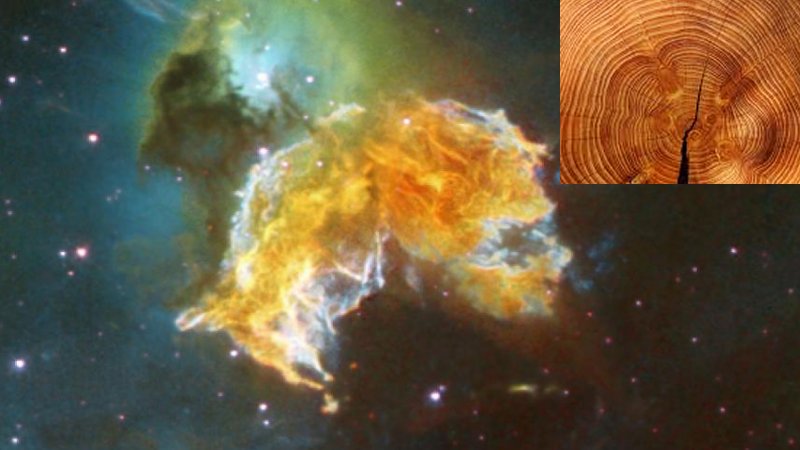Eddie Gonzales Jr. – MessageToEagle.com – Massive explosions of energy happening thousands of light-years from Earth affected our planet’s biology and geology, according to new research by geoscientist Robert Brakenridge from the University of Colorado Boulder.

Brakenridge searched through the planet’s tree ring records for the fingerprints of these distant, powerful cosmic explosions. His findings suggest that relatively close supernovas could theoretically have triggered at least four disruptions to Earth’s climate over the last 40,000 years.
“We see supernovas in other galaxies all the time,” said Brakenridge, a senior research associate at the Institute of Arctic and Alpine Research (INSTAAR) at CU Boulder. “Through a telescope, a galaxy is a little misty spot. Then, all of a sudden, a star appears and may be as bright as the rest of the galaxy.”
A very nearby supernova could be capable of wiping human civilization off the face of the Earth. But even from farther away, these explosions may cause dangerous radiation and damaging its protective ozone layer. The study suggests that potential effects of these extreme celestial events seem to match tree ring records,” according to Brakenridge, who focused his research on carbon-14, a carbon isotope that occurs only in tiny amounts on Earth. Radiocarbon is formed when cosmic rays from space bombard our planet’s atmosphere on an almost constant basis.
“There’s generally a steady amount year after year,” Brakenridge said. “Trees pick up carbon dioxide and some of that carbon will be radiocarbon.”
Sometimes, however, the amount of radiocarbon that trees pick up isn’t steady. Scientists have discovered a handful of cases in which the concentration of this isotope inside tree rings spikes — suddenly and for no apparent earthly reason. Many scientists have hypothesized that these several-year-long spikes could be due to solar flares or huge ejections of energy from the surface of the sun.
Brakenridge and a handful of other researchers have had their eye on events much farther from home.

“There are really only two possibilities: A solar flare or a supernova. I think the supernova hypothesis has been dismissed too quickly.”
There have been recorded supernovas in other galaxies that have produced a stupendous amount of gamma radiation — the same kind of radiation that can trigger the formation of radiocarbon atoms on Earth. While these isotopes aren’t dangerous on their own, a spike in their levels could indicate that energy from a distant supernova has traveled hundreds to thousands of light-years to our planet.
Brakenridge and the team tested the hypothesis and assembled a list of supernovas that occurred relatively close to Earth over the last 40,000 years, and then compared the estimated ages of those galactic fireworks to the tree ring record on the ground.
The eight closest supernovas seemed to be associated with unexplained spikes in the radiocarbon record on Earth, and four of them are especially promising candidates.
Take the case of a former star in the Vela constellation. This celestial body, which once sat about 815 lightyears from Earth, went supernova roughly 13,000 years ago. Not long after that, radiocarbon levels jumped up by nearly 3% on Earth — a staggering increase.
Brakenridge hopes that humanity won’t have to see those effects for itself anytime soon. However, the dangerous effects of supernovas should be further studied focusing particularly on tree rings records that can say much about such effects.
Some astronomers think they’ve picked up signs that Betelgeuse, a red giant star in the constellation Orion, might be on the verge of collapsing and going supernova. And it’s only 642.5 light-years from Earth, much closer than Vela.
“We can hope that’s not what’s about to happen because Betelgeuse is really close,” he said.
Written by Eddie Gonzales Jr. – MessageToEagle.com Staff






